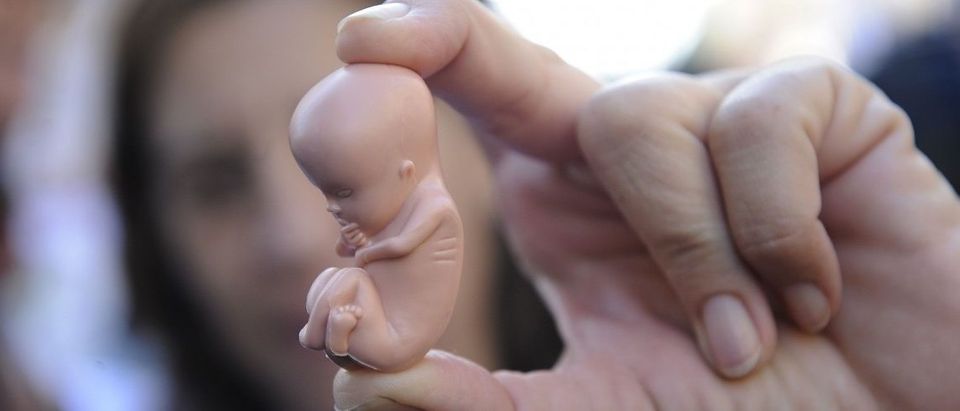It’s a tragedy for the Supreme Court and the American people that Supreme Court confirmation hearings have been so terribly skewed for 45 years by undue emphasis on one case, Roe v. Wade. We should hope that one day Roe v. Wade is overturned, and the abortion issue returned to the people, so that the range of important constitutional and federal issues can be given proper treatment in the assessment of Supreme Court nominees. But that is not where we are today.
In her opening statement on day one of the Supreme Court confirmation hearings for Judge Neil Gorsuch, Senator Dianne Feinstein (D-CA) singled out Roe v. Wade—the Supreme Court’s 1973 decision that legalized abortion for any reason, at any time, in every state—as the most important Supreme Court decision that she wanted the judge to keep, saying it was “super precedent” because it had been affirmed in 39 cases.
That false claim cobbles together cases in which Roe was merely cited or applied, not reaffirmed on the merits. (The actual number of decisions in which Roe was “reaffirmed” is 3, not 39.) More importantly, Senator Feinstein’s claim ignores many other factors that show that Roe is the most unsettled constitutional decision of the past 50 years.
Roe is unsettled by the Justices’ own inconsistency in their application of Roe’s abortion doctrine, and its detailed standards, over the past 44 years. That, in turn, has sown inconsistency and confusion among the lower federal courts.
In fact, Roe 1.0—the original opinion including the original rationale for Roe—is defunct, discarded in the Casey decision of 1992. The historical rationale for Roe—the legal justification for its connection to the Constitution—was replaced by a new sociological rationale created in Casey—the assumption that women have come to rely on abortion as a back-up to failed contraception.
Roe is unsettled because the original opinion and rationale have never been persuasive. The Court abandoned the original rationale by 1989. Abortion-rights activists have spent the past 44 years looking for a new constitutional hook for Roe—the equal protection clause? the Nineteenth Amendment that gave women the vote in 1920? Or (my favorite) the cruel and unusual punishment clause?
Roe is unsettled in public opinion. Public opinion polls periodically show majority “support” for Roe, but only when Roe is intentionally distorted and mischaracterized as only legalizing abortion in the first three months of pregnancy. A majority of Americans oppose abortion after the first trimester.
A February 2017 poll, commissioned by the Human Family Research Center and conducted by the Polling Company, found that Americans were almost evenly divided when they were told that overruling Roe would leave the abortion issue to the states (45% reconsider, 49% continue to follow, with 5% undecided).
The abortion rate, according to 2014 figures, has dropped to its lowest level since 1973. Women still seek approximately 900,000 abortions or less a year, but more than half of these are repeat abortions, and millions of women haven’t had an induced abortion and never will. If women “rely” on anything, it’s contraception, not abortion.
Roe is unsettled in medical practice. Ultrasound came on the commercial market a few years after Roe and permanently changed medical practice and public understanding.
Roe is unsettled because American doctors have abandoned abortion. Few will do it. Women go to an abortion provider for an abortion but another gynecologist for everything else. It’s long been a myth that abortion is “between a woman and her doctor.”
Roe is unsettled by its extremely narrow focus. It has nothing to do with contraception (which is independently protected by other decisions of the Court) or with women’s health care. It’s about a “right” to “terminate pregnancy” and nothing more.
Roe is unsettled by state protection for prenatal human beings in property, prenatal injury, wrongful death, and fetal homicide law. Despite Roe, the states have moved ahead with state legislation and judicial decisions that treat the unborn child as a human being from conception, creating considerable schizophrenia. Twenty-five states now have a fetal homicide law that treats the killing of an unborn child (outside the context of abortion) as a homicide—from conception.
Roe is unsettled by a growing body of international medical data finding increased risk of pre-term birth, mental trauma, and breast cancer after abortion. And, in recent years, statistical studies from Ireland and Chile have provided evidence that abortion prohibitions do not compromise women’s health and that legalizing abortion does not positively impact women’s health.
Roe is unsettled because the Justices cannot perform their self-appointed role as the national abortion control board, created when the Justices in Roe drafted a new, detailed national abortion law, which binds every state and local government in the country.
Roe is unsettled because other nations have not followed its sweep. The U.S. is one of only 4 nations of 195 across the globe which allows abortion for any reason after fetal viability, and one of only 7 that allows election abortion after 20 weeks.
The mere passage of time does not settle a Supreme Court decision. Roe is 44 years old. But Plessy v. Ferguson (1896) (which affirmed racial segregation) was 58 years old when it was overturned in Brown v. Board of Education (1954). Several other decisions were older when they were overturned.
Roe is unsettled in politics. One major party has opposed the decision in its party platform since the 1970s. And just last year, the nation elected a presidential and vice-presidential candidate who promised to appoint “pro-life” justices and to “overturn Roe v. Wade.”
Dozens of other decisions by the Supreme Court were not mentioned during the Gorsuch hearings because they are so unquestionably settled that no one needs to raise the question. To ask the question, “Is Roe settled?” is to answer it.
Clarke D. Forsythe is Acting President & Senior Counsel at Americans United for Life and author of Abuse of Discretion: The Inside Story of Roe v. Wade (Encounter Books 2013).












